Split systems: description, types and operation

Climatic equipment is a large group of equipment that is divided into several categories. The split system occupies an important place in this list. We have to study this climatic equipment in detail, understand its features and varieties, get acquainted with leading manufacturers and rules of use.

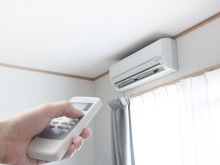
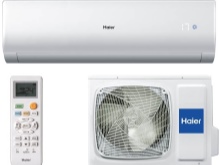
What is it and what is it for?
The split system is a climatic device, the design of which consists of a pair of blocks. One of these parts is located indoors, and the second is installed outdoors. With this device, you can create optimal climatic conditions in the house through air conditioning and heating. Also, using split systems, you can reduce air humidity.
Modern split systems have a wide range of applications, since they are multifunctional devices.
It is the functionality of air conditioners that we have to study further, because when buying any equipment, you need to clearly understand what it is for and what responsibilities it will perform.
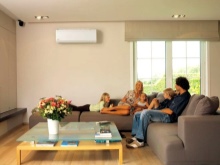
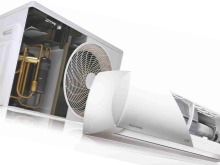

Main functions and characteristics
Any air conditioner has a number of characteristics that can tell a lot about it. To do this, you need to understand the parameters and be able to interpret them. We will cover the main points.
- Power consumption - this is not a cooling capacity, although these two parameters are often confused and considered interchangeable. For example, a 2.5 kW split system will use around 800 W, which will be less than the consumption of a kettle. All models up to 4 kW can be connected through a regular outlet - the plugs will not be knocked out from this. But a split system, for example, 7 kW, not to mention 9 kW, will be dangerous to connect in the usual way.
- Energy efficiency is determined by the difference between cooling capacity and power consumption. This will be the EER, which for household models should be in the range of 2.5-3.5. The COP shows the energy efficiency of the system in heating mode. Its normal values are in the range from 2.8 to 4. Some manufacturers indicate only one indicator, the smallest, in order to mislead the buyer. Air conditioners are classified according to the energy efficiency scale, so each model is assigned a corresponding letter designation. The most economical systems are assigned the letter A.
- Seasonal factors (SEER and SCOP) show the actual power consumption that is specific to a system. These indicators are measured in real conditions, so they are more true.
- The total amount of electricity consumed by the split system in a calendar year. This indicator can be multiplied by the cost of one kilowatt of energy, which will allow you to find out the amount of electricity costs that the air conditioner will "eat".
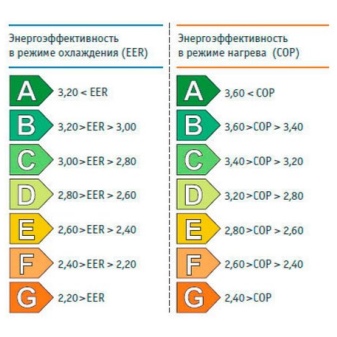

Features are followed by functions. The feature set may differ depending on the model. The basic list looks like this.
- Cooling indoor air to the desired level.The user can independently set the temperature that will be maintained in the room.
- It is convenient to use space heating during the off-season, when stationary heating is not yet functioning.
- Household models, working in cooling mode, dry the air. This feature can be useful for rooms with high humidity levels. In rooms with dry air, a humidifier must be installed together with the air conditioner. Both dry and humid air are equally harmful to humans.
- The problem of dry air disappears with the purchase of split systems with a humidifier. The cost of such models is high, but the costs are justified. This function is necessary - otherwise, you will have to purchase a special humidifier additionally.
- Autonomous operation is ensured by the operation of numerous sensors. They send signals to the control panel at the right time, and the air conditioner reacts to them accordingly.
- Air purification is included in all models. This function allows you to remove various pollution, dust and even unpleasant odors from the air. This is achieved thanks to the filters that are present in all models.
- More and more models with an ionizer began to be produced. This function is useful, which has been repeatedly proven in practice. Ionization allows you to fill the room with fresh air, which is not only pleasant, but also beneficial to breathe.
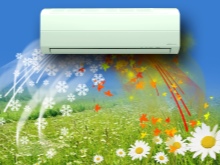
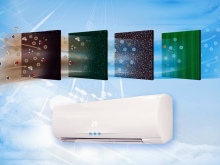
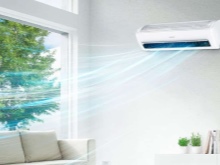
These are just the basic functions that are found in all modern models. Each manufacturer strives to make its product more functional and unique, so it develops additional options. You should not chase broad functionality, guided by the rule "the more, the better."
You will have to pay extra for each additional function. Moreover, the more complex the device, the more expensive the repair is.
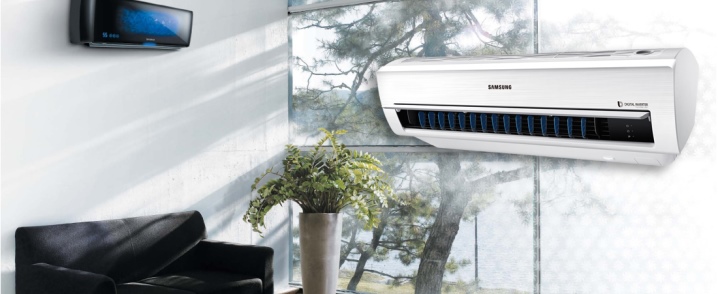
Advantages and disadvantages
For split systems, as well as for any other technique, there are negative and positive aspects. The list of benefits consists of the following points:
- the temperature is maintained in the range that is set by the user;
- ease of creating a comfortable microclimate;
- low level of electricity consumption;
- low noise level;
- the ability to operate at negative temperatures;
- convenient control;
- simple maintenance.


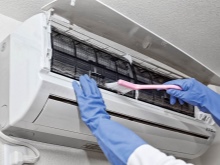
As for the negative aspects, we managed to find only two shortcomings:
- high cost, which directly depends on the functionality and reliability of the system;
- high sensitivity to voltage surges, which requires the use of a voltage stabilizer - otherwise, the service life of the split system can be very short.
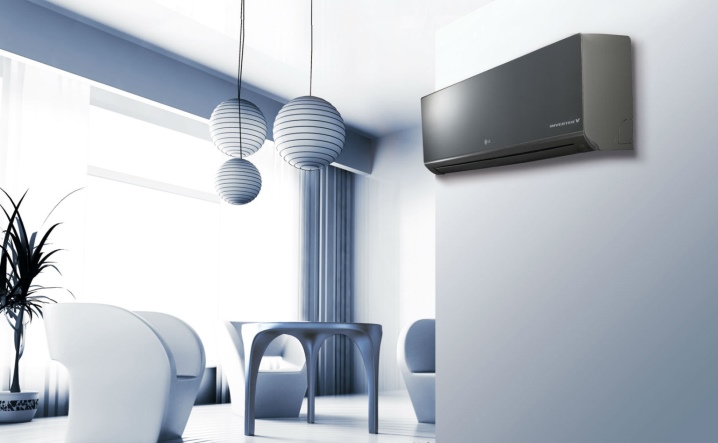
Device
Almost any split system is a two-piece equipment. Each block performs its own functions and has a special device.
The indoor unit, respectively, is located inside the room, usually a place near the window is chosen, but other options are also possible. The panel of this unit hides the heat exchanger and air filters. The filter elements are characterized by a curved shape. There are a couple of such parts in standard models. A heat exchanger is hidden behind them.
The air passing through the filters is distributed throughout the room thanks to the shutters. In split systems, two types of blinds are installed. The horizontal details are visible to the user and hide the vertical blinds behind them. It is thanks to the vertical parts that the exact distribution of the air flow is possible.
In most models, under the cover of the indoor unit on the right side, you can find the "Autorestart" button. Pressing it allows you to start the system without the remote control.
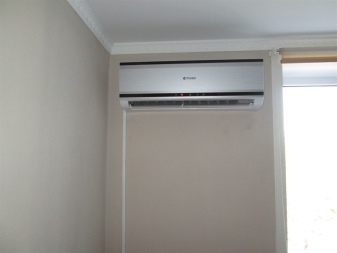
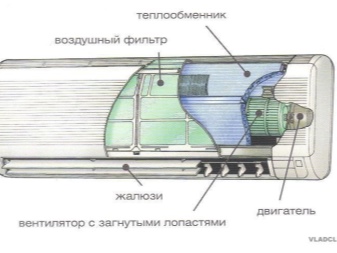
The outdoor unit is usually located on the facade of a building or inside a balcony / loggia. Inside this unit is the compressor, which is the main component of the entire system. In modern split systems, inverter and non-inverter compressors are installed. It is this detail that determines the main characteristics of the HVAC equipment. Air conditioners are often divided into two groups: sevens and nines. This refers to the capacity of the compressor.
The design of the outdoor unit also implies the presence of a heat exchanger, similar to the indoor unit. Since the outer part of the split system is located on the street and in the process of operation experiences the negative impact of the external environment, then its body must have an anti-corrosion, high-quality coating.
The external block has a hole with a grill. A fan is visible through it. This part is distinguished by the shape of the blades, which is selected for each model individually using a computer program. This approach allows you to reduce the noise level during the operation of the equipment.
The two blocks are interconnected by means of highways. One of them is intended for coolant, and the second is used for condensate.
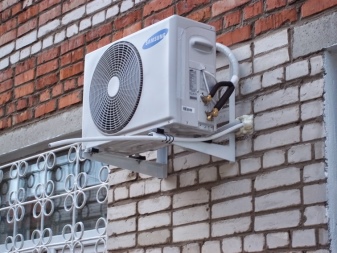
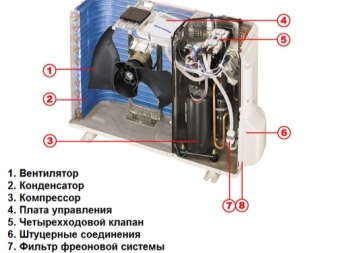
Principle of operation
Air conditioners are very different, but they all work according to the same principle. We have to get acquainted with its basics.
Heating is one of the basic functions of modern split systems. To increase the air temperature in the climatic equipment, the direction of movement of the refrigerant is changed, which is provided by the operation of the compressor. The solenoid is responsible for controlling the valve. During the heating process, the radiator on the outdoor unit cools down, which leads to active condensation. If the split system is not installed on the front of the building, then it is necessary to take care of condensate drainage.
The heat pump mode is associated with an intensive decrease in the temperature of the condenser on the outdoor unit. This can cause freezing of the structure. This mode of operation is relevant in the autumn and spring seasons, when the temperature outside is above zero. If the outside temperature is below zero, then freon will not boil in the radiator, therefore, it will enter the compressor in liquid form.
In modern models with high-quality electronics, protection is installed that will not allow the use of equipment in heating mode at low temperatures outside.
In the absence of such a function, the user will have to independently control this moment - otherwise the climatic equipment will fail.
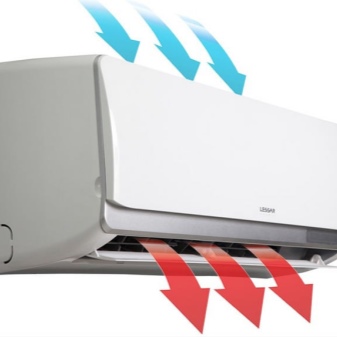

Room cooling can be calculated for summer and winter. If everything is clear with the first option, then the second mode requires some explanation. Cooling in winter is required for rooms with intense heat generation. These can be server and hardware rooms. In this mode, the external unit of the air conditioner heats up, so it cannot freeze.
For cooling in winter, a fan controller is required, which is responsible for turning off the constant fan mode and turning it on when the condenser warms up. The controller also regulates the processes of heating the drain tube and the compressor crankcase before starting.
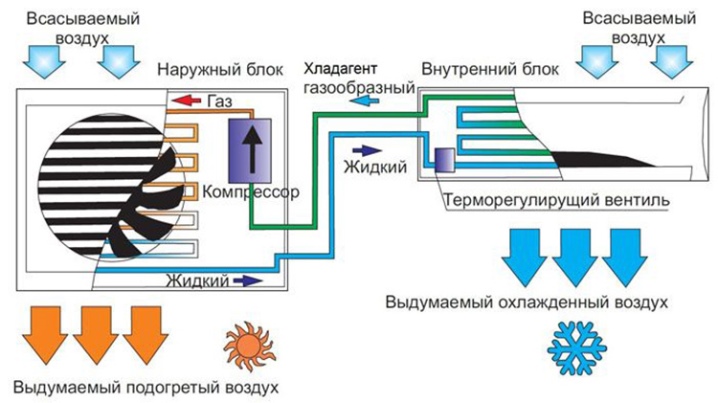
Views
Modern split systems have a complex classification that complicates the choice for the user. In order not to be mistaken with the choice, you must have at least a minimal understanding of each type of air conditioner.
- Inverter systems are based on changing the compressor frequency by converting constant current to alternating current. This type of air conditioner is characterized by low energy consumption, so such systems are considered one of the most economical. Moreover, it is these models that are recognized as the quietest split systems.
For such advantages, you have to pay extra, because the cost of inverter climate control equipment is higher than usual.
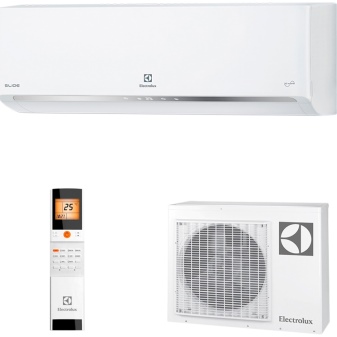
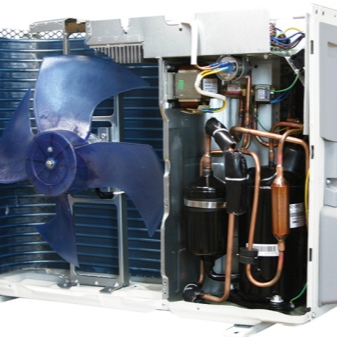
- Refrigeration units are designed for cold rooms. These split systems are installed inside large refrigerators.The temperature inside the chamber is automatically regulated. Such equipment is relevant in shopping centers, wholesalers and production facilities. The structure also consists of two blocks, between which the pipeline is laid.
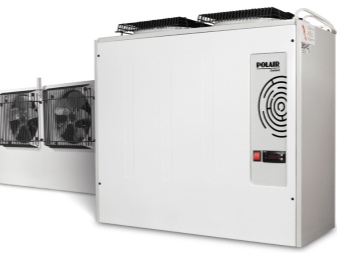
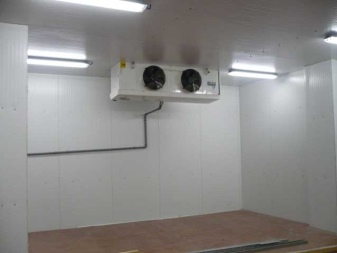
- Wall split systems can be safely called the most widespread and actual home climate control systems. These air conditioners are characterized by high build quality, excellent reliability, efficiency and convenient control.
This category is actively developing, the functionality of split systems is expanding and more and more designer devices appear.
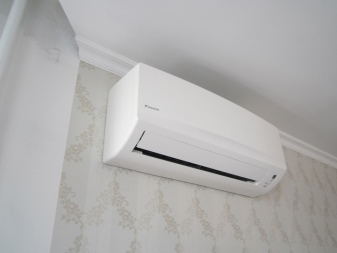
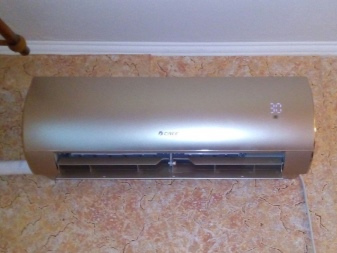
- Channel models differ in the installation method of the indoor unit. It is installed in the space between the ceilings, which is located behind the suspended ceiling structure. This requires about 40 cm of free space, which is not possible in every room.
Air supply and exhaust is carried out through air ducts, which can be located at arbitrary points. Such split systems easily fit into different interiors.
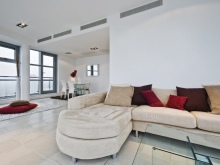
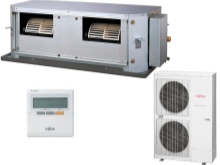
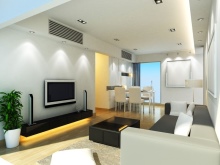
- Ceiling modern devices it is better to choose for rectangular rooms with a small area. Such systems are produced with low power. Due to the design features, the air flow is directed parallel to the ceiling or wall.
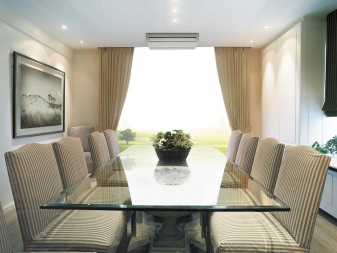
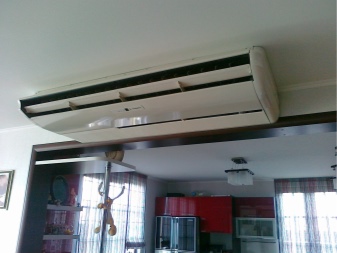
- Multi-split system - this is the same air conditioner, but with a slight difference. Its essence lies in the presence of several indoor units that are connected to one external one. Such devices allow you to create a favorable microclimate throughout the house or in several rooms. Since there is only one external block, it turns out to preserve the aesthetic appearance of the building.
Multi-split systems allow connecting different types of internal devices to one external unit.
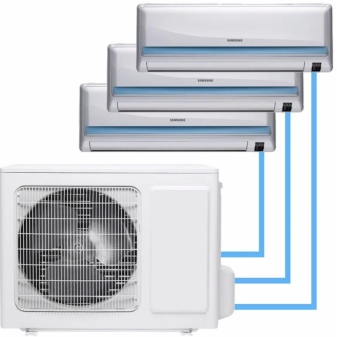
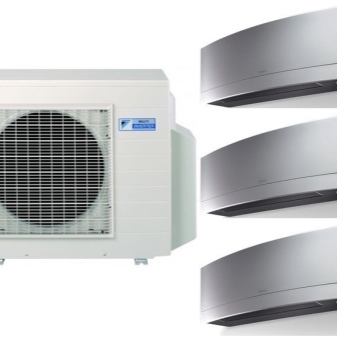
- Floor models are characterized by high performance. The location of the indoor unit can be selected according to the desired direction of the air flow.
Floor split systems are more expensive, powerful and functional compared to wall-mounted models.
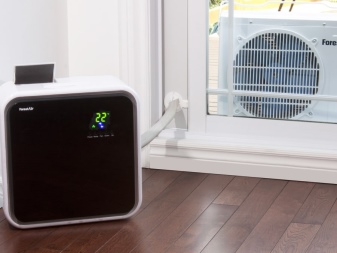
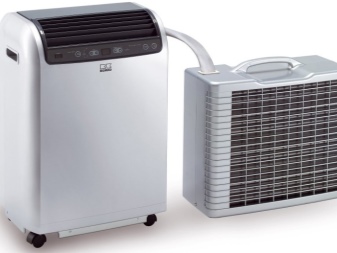
- Cassette split system intended for large rooms. A prerequisite is a suspended ceiling. The indoor unit is located in the space between the ceiling, the height of which must be at least 25 cm. Only the decorative grille will be visible in the room.
Such devices can add up to 10% fresh air to the room.
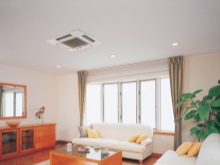
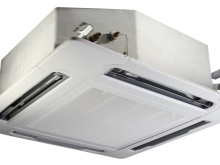
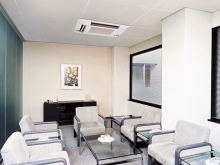
- Column climate control unit selected for large rooms. For the installation of such split systems, false ceilings are not required. The design of the columnar models allows a powerful stream to be created, which is initially directed towards the ceiling and then throughout the room.
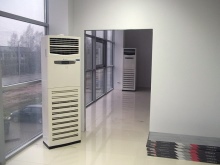
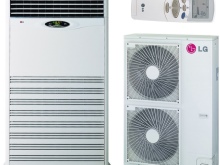
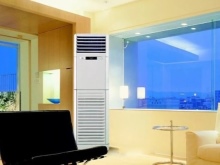
- Floor-ceiling climate control unit is versatile due to the features of the installation. The indoor unit can be located on the ceiling or on the floor.
This option is chosen in cases where it is not possible to install a wall-mounted air conditioner.
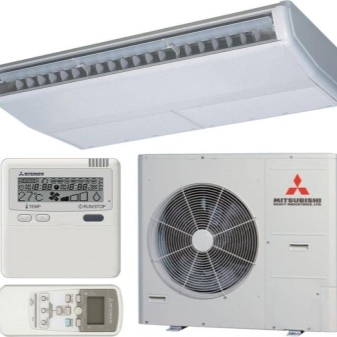
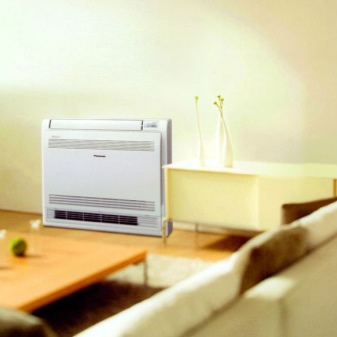
- Vertical split system differs from its horizontal counterpart only outwardly. Features and functions are not much different. The only exceptions are some models, which come with several tangential fans and side louvers.
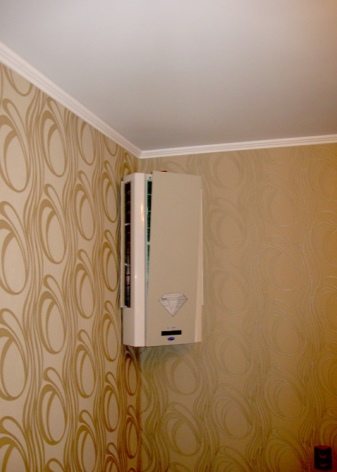
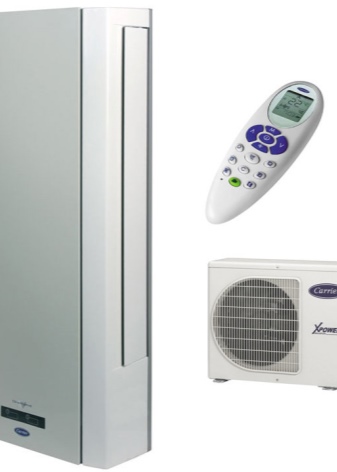
- Window Models are inexpensive options that are usually chosen for an office, small apartment. There is no division into indoor and outdoor units - all parts are in one case. It fits into a window opening or a hole in the wall. This setting is not always convenient.
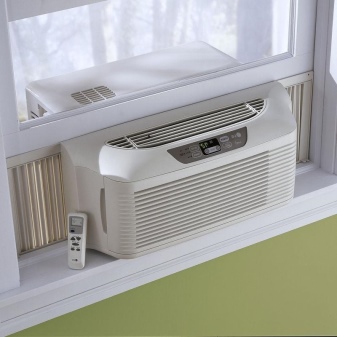
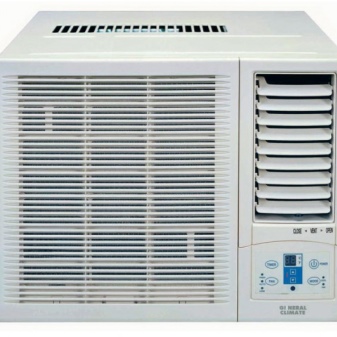
- Membrane systems - this is one of the types of climatic equipment that works with an inflow of fresh air. The design contains a special membrane, the function of which is to regulate the operation of the channel. Due to the peculiarities of the membrane operation, the oxygen level in the room is always maintained at an optimal level.Membrane climatic devices with forced ventilation are not easy to find, since they are rare guests on the Russian market.
The cost of such installations starts from 50 thousand rubles, and you will have to overpay for the installation.
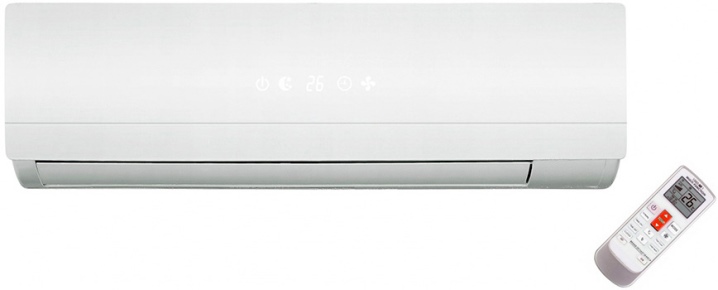
- Modular devices are an addition to the existing split system. The basis is a recuperator with an air duct, which is equipped with its own external unit. It is located near the air conditioner unit. Modular systems are equipped with small duct tubes. Air enters through them, which is saturated with heat along the way. Roughly speaking, modular devices are a small hood in which air is mixed.
The disadvantages include the bulkiness, which is created by placing the second block on the facade of the building, and limited air exchange at the level of 20 m3 / h.

You need to carefully think about the type of split system, consider the features of the room, formulate the requirements for future climatic equipment and, based on this information, make an informed choice.
Maximum operating temperature
The basis for the long-term operation of a split system is compliance with the rules of its operation. An important place here is given to the observance of the temperature at which the split system operates. Such restrictions exist for cooling and heating at different times of the year. Each model has its own limitations, which are prescribed in the instructions and indicated in the passport.
The average value is in the range of 20-27 degrees Celsius. Under these conditions, the air conditioner does not experience increased loads, and the compressor does not wear out faster than expected. Acceptable values can vary widely. This is due to the difference in the number of control sensors that are located in the indoor unit. In models with a large number of sensors, the lower limit may be at a different level.
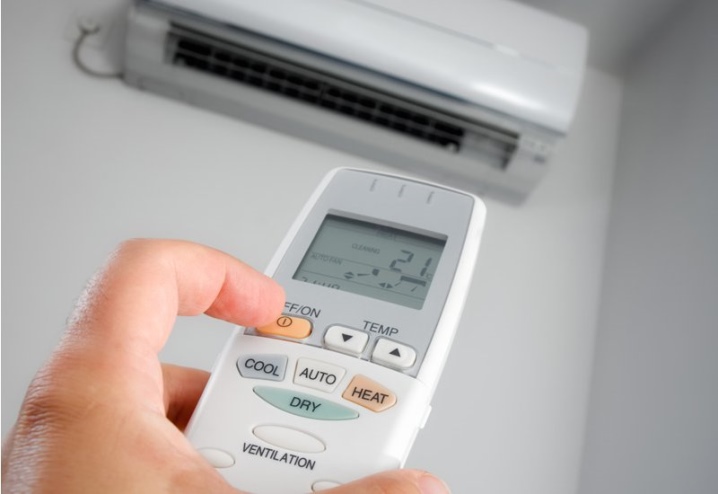
Most split systems are characterized by standard temperature limits. For operation in cooling mode, the range of permissible temperatures is from +18 to + 45 degrees. For heating mode, other limits are set: from -5 to +18.
There are exceptions in the HVAC equipment market. These can only be very expensive models. Similar systems are found in the model lines of Mitsubishi and Daikin. Such equipment can be used almost all year round, because the range of permissible temperatures is in the range from -25 to +55 degrees.

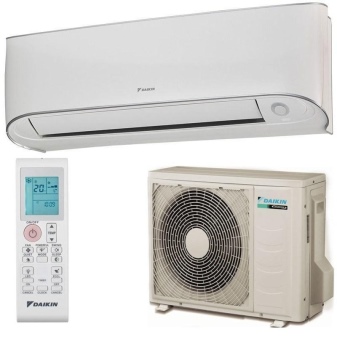
Filters as a marketing ploy
Any air conditioner has a filter through which air is passed for purification. The filter elements must be cleaned and washed periodically. Replacement may be required in extreme cases, usually one filter serves on a par with the air conditioner. Filter elements fall into two categories.
Coarse filters or pre-filters protect the air conditioner from the ingress of dirt, dust and other foreign elements. The pre-filters are made in the form of a fine mesh mesh that traps particles larger than 2 microns. They are made of metal and plastic, and also differ in the type of weaving of threads. The flat version is less effective than the bulky one.

Fine filters capture particles up to 2 microns in size. It's not that simple with these filter elements. There are a huge number of them, which is constantly growing:
- absorbent;
- coal;
- zeolite;
- plasma;
- electrostatic;
- ultraviolet;
- photocatalytic;
- antibacterial;
- antioxidant;
- with vitamin C.
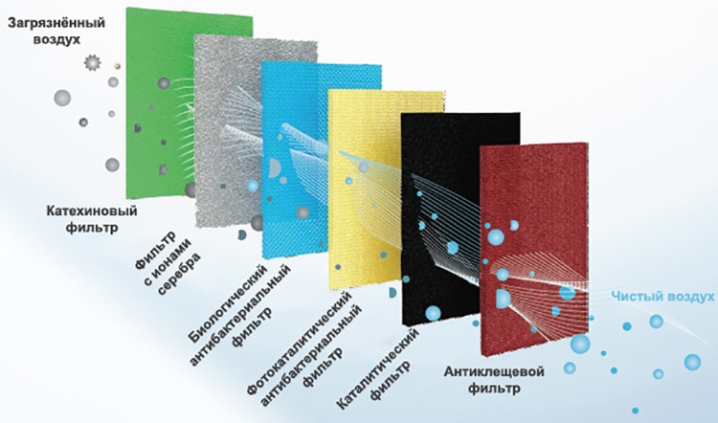
Not all of them turn out to be really effective. Some of them, apart from their high cost, are no different from conventional fine filters. Manufacturers of air conditioners are actively making money on this topic, throwing dust in the eyes of consumers. Usually, it is the filters that are described most colorfully, while the really important characteristics are left out.
The correct choice of a split system should be based on the study of its power, reliability, performance, energy efficiency and noise performance.

Manufacturers and popular models
Choosing a split system, you need to pay special attention to the manufacturer. Quality and reliability are paramount here. And it's not just about the high cost. Split systems are responsible for a favorable microclimate in the room, and this is already an important reason to think about and pay attention to the choice of a manufacturer. We have carefully studied the companies, their products and user reviews. Based on this information, it was possible to create a rating of the best manufacturers of split systems.
- Ballu company by her example, she proved that even budget equipment can be reliable, high-quality and multifunctional. Availability leads to a short service life, the average value of which is at the level of 7 years.
With careful operation and timely maintenance, this figure can be increased to 10 years.
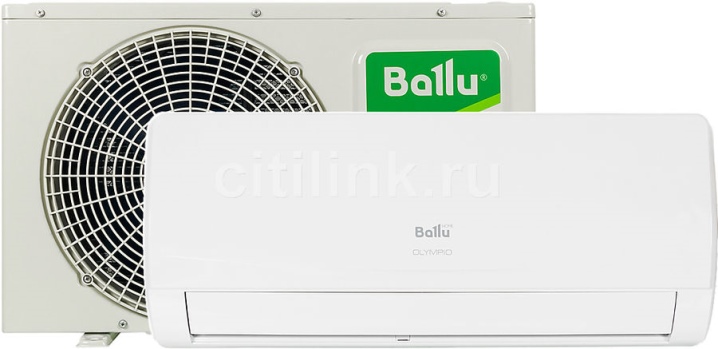
- Another worthy representative of the budget class is Electrolux company... Buying such a split system will not be a big blow to the family budget. A wide range of equipment allows you to choose the right model for the user with a limited budget and the discerning buyer.
Not a very pleasant feature is the increased noise level, but the design of any model is simple and understandable to everyone.
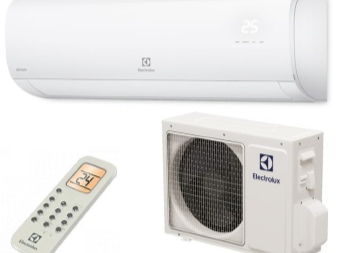
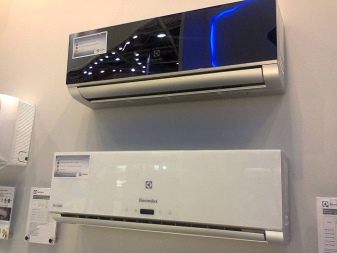
- Daikin technology - this is definitely a premium class. Everything here is at the maximum level: quality, assembly, reliability, durability and functionality. The manufacturer produces household and industrial climatic systems. Users are impressed by the convenient installation, easy maintenance and a high level of environmental friendliness. In models released recently, freon has been replaced by another refrigerant.
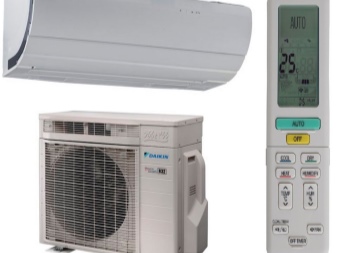
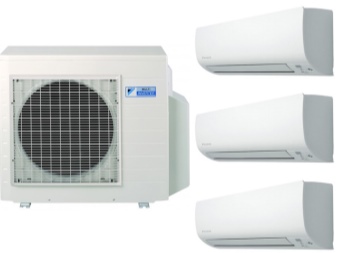
- Panasonic is a well-known brand in the global market. Air conditioning split systems from Malaysia stand out for their excellent reliability, which can be seen in every detail. The manufacturer does not save on filters and air purifiers, even for budget models the best components are used.
Split systems Panasonic do not lose their popularity largely due to convenient control, simple installation and high reliability.
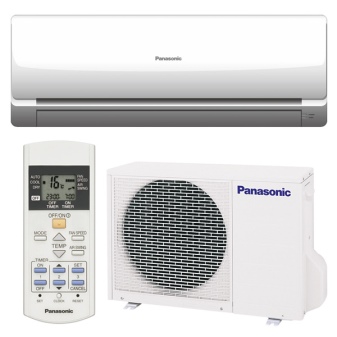
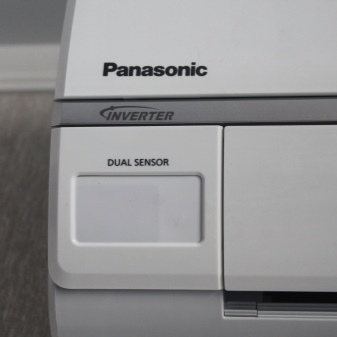
- Split systems round out our rating from Mitsubishi Electric... This company is well known in the HVAC equipment market. The manufacturer has a lot of energy efficient systems on its account. He also takes an innovative approach, works on noise reduction and enhances functionality.
Despite these features, the ratio of cost and quality is at an optimal level.
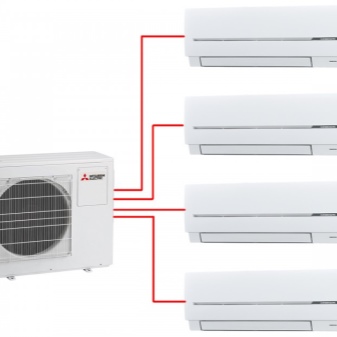
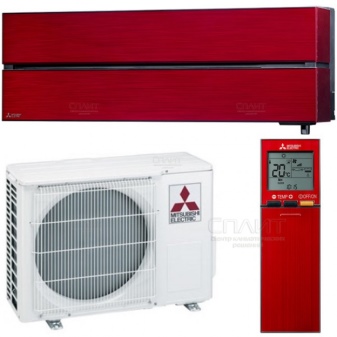
Selection recommendations
You can't just buy the first split system you like. This technique must be chosen consciously, with knowledge of the matter and some subtleties. The choice of such climatic technology is based on important points, each of which must be taken into account. We have selected the rules that will help you choose the right model for your apartment.
- We advise you to start your choice with the selection of the capacity of the future HVAC equipment. This indicator must exactly correspond to the area of the room. You also need to consider the side the windows face. For example, for a room with a southern exposure, the power indicator of the split system must be multiplied by a maximum of 1.3.
- HVAC equipment consisting of several units must have an outdoor unit with an appropriate capacity.
- The type of indoor unit should match the general style of the room. With a wide variety of models, it will not be difficult to choose the right split system, which will not create an imbalance in the room with its presence.
- The manufacturer must be reliable, well-known in the world market, whose products are not in doubt, respected among consumers and professionals.
- The length of the route and the difference in height, which are indicated in the passport, must be calculated to perform the correct installation, taking into account generally accepted standards.
- The noise limits and temperature range must be checked to match the specifications in the passport.
- You can save on buying a split system for your home by choosing a model with optimal functionality. Each additional feature increases the cost of the equipment.
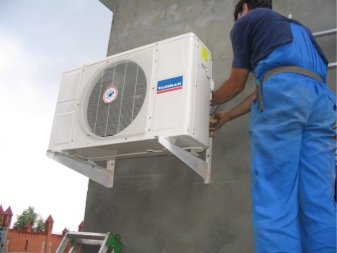
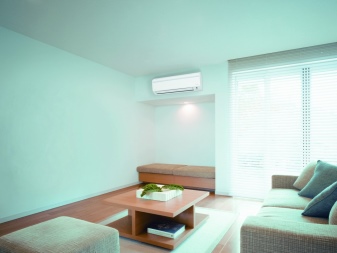
Where to place?
You cannot place the split system in the first place that comes to your liking or will be free at the time of installation. The location of the air conditioner must be carefully considered. This will help advice from experts.
- There should be no place for a long rest near the device, at a distance of 2-3 meters. The lowest temperature will be kept in this zone.
- The air conditioner should not work near heating devices, heating devices and sources of steam.
- Furniture should not be placed in the path of the air flow, as it will create an obstacle and reduce the efficiency of the device.
- When windows are exposed to the sunny side, the air conditioner should be positioned so that the air flow is perpendicular to the solar heat input. In this way, an even temperature distribution can be achieved.
- It is undesirable to place the indoor unit opposite the door. With this arrangement, the cooled air will go outside the room.
- For wall mounting, a minimum of 15 cm must be removed from the ceiling. This space is required for normal air circulation.
- In the bedroom, the indoor unit is usually located above the berth. In the kitchen, the air conditioner should be removed from the stove. The air flow should not go outside the room - otherwise, odors from the kitchen will quickly spread throughout the house.
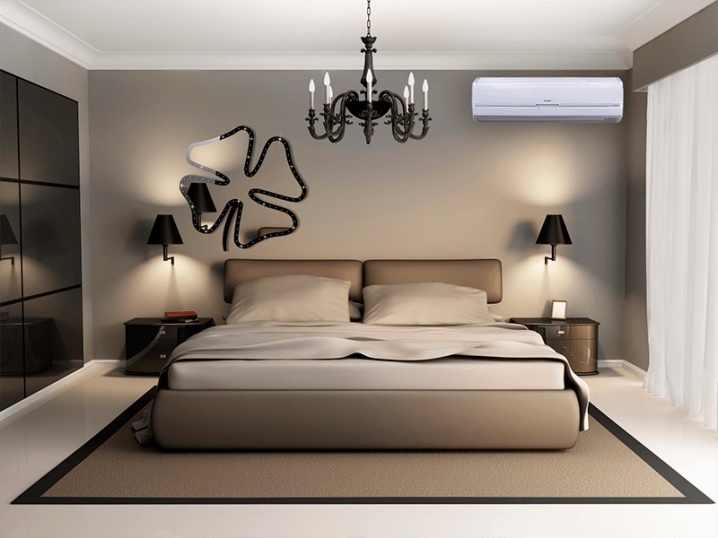
Instructions for use
You need to know how to use an air conditioner, otherwise you can easily get a cold, which can develop into a more serious illness. To prevent this from happening, you must adhere to simple operating rules.
- The optimum room temperature is between 24-26 degrees. It should not be more than 7 degrees below the outside temperature.
- During extreme heat, the temperature decrease occurs in several stages. The cooling level is reduced by no more than two degrees every hour.
- The cooled air flow must be parallel to the ceiling. He should not blow on a person, otherwise a cold cannot be avoided.
- The air flow rate should be as low as possible.
- The fast cooling / heating mode must be turned on in advance, for which it is convenient to use the timer. The air conditioner will automatically turn on at the right time and turn off when the desired temperature is reached.
- An air humidifier must be used, since any split system dries up the air, which is harmful to humans. Unless, of course, your air conditioner is equipped with a built-in humidifier.
- In the case of air conditioners that do not draw air from the street, it is necessary to ventilate the room. Maximum every 5 hours.
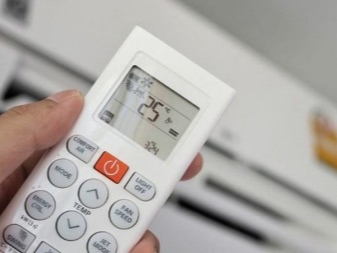
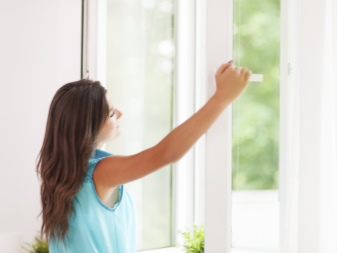
The need for maintenance
Any equipment needs periodic maintenance. If this condition is met, the service life of the equipment increases, its functionality is restored and the likelihood of fungal development decreases. The essence of TO consists in the following points.
- Inspection of the device consists in studying the external block and its fasteners, the state of the insulation of the main line and assessing the level of pollution. The noise that the split system emits is also being studied.By uncharacteristic sounds, you can establish a possible breakdown and violations, which in the future will lead to the failure of the entire system.
- Cleaning of both units with a pressure washer may be required more often if the system is actively used or if there is an active flowering of plants. Mechanical cleaning in this case cannot give a high-quality result.
- The internal pressure is checked using a pressure gauge that is connected to the service valve (external unit). This device is called air conditioning pressure gauge. It allows not only to check the pressure, but also to bring it to normal level by refueling. Adding freon is a demanding job that requires care. The reason lies in the high sensitivity of freon to ambient temperature.
- Cleaning the filters of the indoor unit is a mandatory step that should never be ignored. Delaying cleaning the filters puts your health in serious danger. Over time, the filters accumulate dust and harmful microorganisms, which actively multiply and enter the air. You can flush the filters yourself. To do this, you need to remove the decorative cover, take out the filter element, rinse it under water, dry it and reinstall it.
- Purging the drain tube is necessary due to blockages, which makes it difficult for condensate to escape from the system. Cleaning the tube requires disconnecting the hose and tube, which is then cleaned with compressed air. You can also use a thin glass rod. But metal devices in the form of a tube, cable or wire cannot be used, since the tube can be easily damaged.
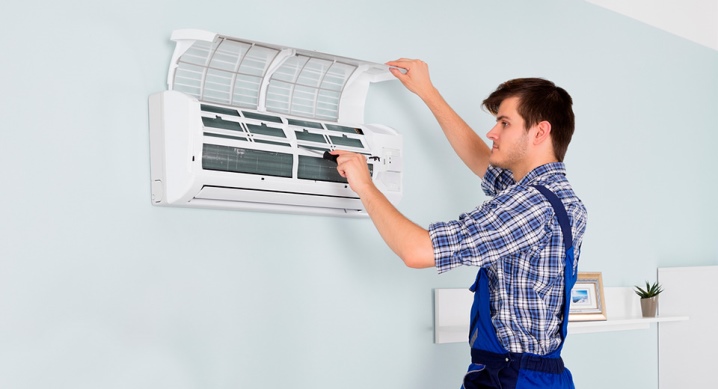
Maintenance of the split system must be carried out by specialists. Although you can handle some of the points on your own, most of them require an experienced approach, the use of a professional tool and the use of special skills.
How to choose a split system, see the next video.













The comment was sent successfully.